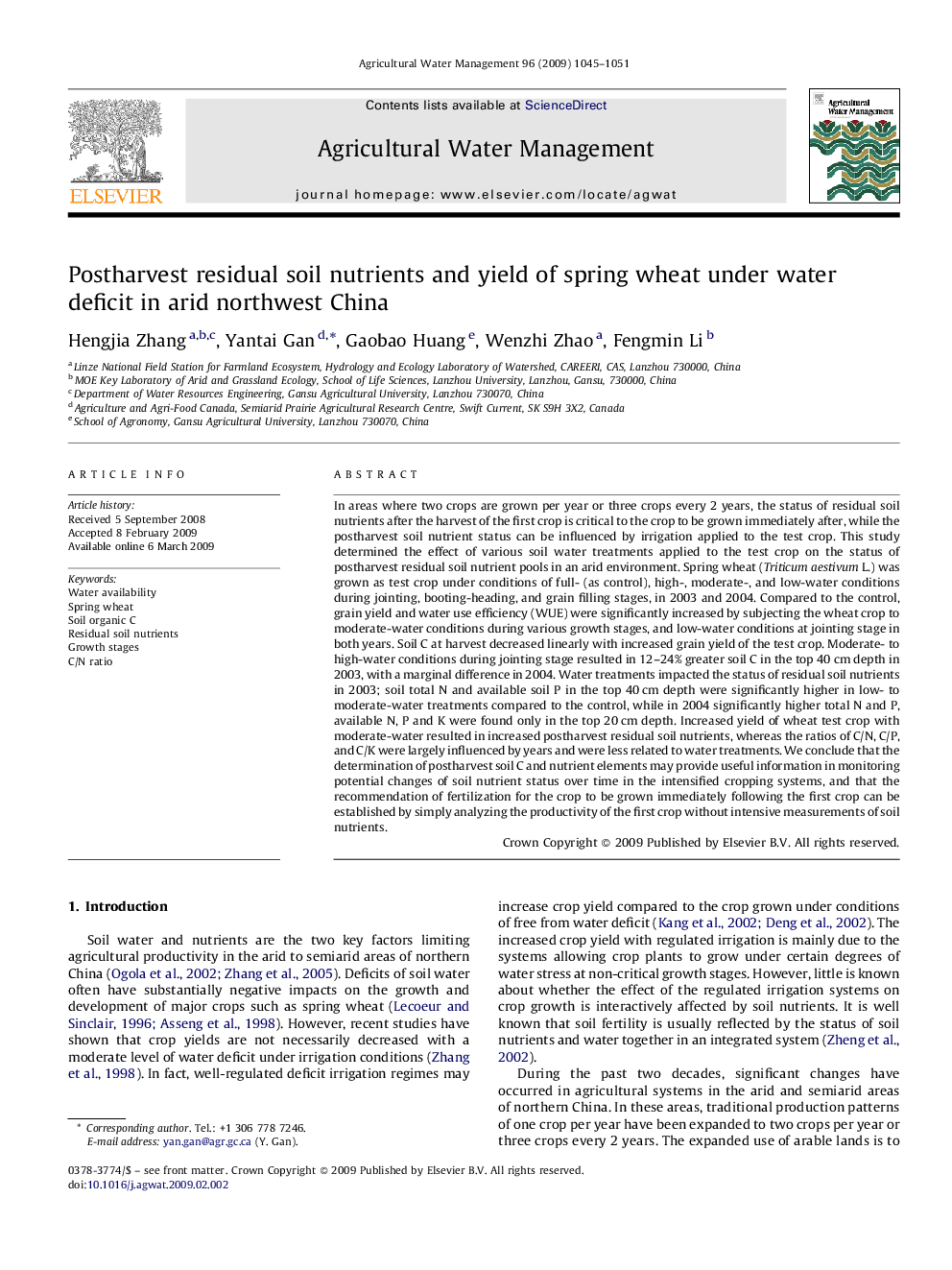| کد مقاله | کد نشریه | سال انتشار | مقاله انگلیسی | نسخه تمام متن |
|---|---|---|---|---|
| 4480123 | 1316474 | 2009 | 7 صفحه PDF | دانلود رایگان |

In areas where two crops are grown per year or three crops every 2 years, the status of residual soil nutrients after the harvest of the first crop is critical to the crop to be grown immediately after, while the postharvest soil nutrient status can be influenced by irrigation applied to the test crop. This study determined the effect of various soil water treatments applied to the test crop on the status of postharvest residual soil nutrient pools in an arid environment. Spring wheat (Triticum aestivum L.) was grown as test crop under conditions of full- (as control), high-, moderate-, and low-water conditions during jointing, booting-heading, and grain filling stages, in 2003 and 2004. Compared to the control, grain yield and water use efficiency (WUE) were significantly increased by subjecting the wheat crop to moderate-water conditions during various growth stages, and low-water conditions at jointing stage in both years. Soil C at harvest decreased linearly with increased grain yield of the test crop. Moderate- to high-water conditions during jointing stage resulted in 12–24% greater soil C in the top 40 cm depth in 2003, with a marginal difference in 2004. Water treatments impacted the status of residual soil nutrients in 2003; soil total N and available soil P in the top 40 cm depth were significantly higher in low- to moderate-water treatments compared to the control, while in 2004 significantly higher total N and P, available N, P and K were found only in the top 20 cm depth. Increased yield of wheat test crop with moderate-water resulted in increased postharvest residual soil nutrients, whereas the ratios of C/N, C/P, and C/K were largely influenced by years and were less related to water treatments. We conclude that the determination of postharvest soil C and nutrient elements may provide useful information in monitoring potential changes of soil nutrient status over time in the intensified cropping systems, and that the recommendation of fertilization for the crop to be grown immediately following the first crop can be established by simply analyzing the productivity of the first crop without intensive measurements of soil nutrients.
Journal: Agricultural Water Management - Volume 96, Issue 6, June 2009, Pages 1045–1051